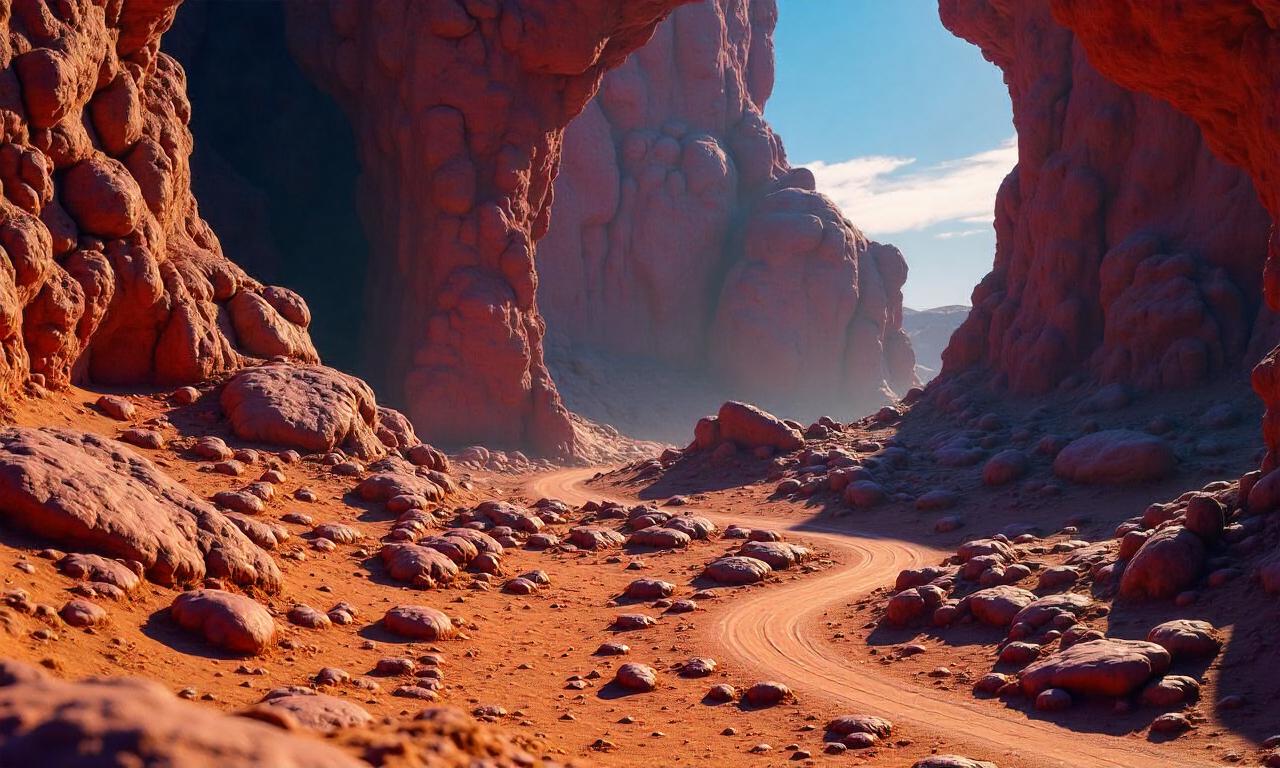The formation of fossils is one of the most fascinating natural processes on Earth, offering a glimpse into the ancient past and revealing the secrets of life that once thrived. How are fossils formed over time? This question has intrigued scientists, historians, and curious minds for centuries. Fossils are the preserved remains of plants, animals, and other organisms, and their creation involves a delicate interplay of time, environmental conditions, and biological processes. Understanding how fossils are formed not only enriches our knowledge of prehistoric life but also highlights the importance of these natural records in unraveling the mysteries of evolution and Earth’s history. This article explores the intricate steps of fossil formation, from the initial death of an organism to the final discovery of these time capsules, while ensuring relevance for long-term SEO optimization.
Table of Contents
ToggleThe Natural Process of Fossilization
Fossilization is a rare and complex phenomenon that occurs when the remains of an organism are preserved in a way that allows them to survive the ravages of time. While many organisms decay completely after death, the right conditions can lead to the creation of a fossil. This process typically takes thousands to millions of years and involves several stages, including rapid burial, mineralization, and geological transformation. The key to successful fossilization lies in preventing the complete breakdown of organic material, which is why the location and environment of an organism’s death play a critical role.
The first step in fossil formation is the death of the organism. When an organism dies, it becomes vulnerable to decomposition by bacteria, fungi, and other environmental factors. If the body is not quickly buried by sediment—such as mud, sand, or silt—it is likely to disintegrate before any fossil remains can form. Rapid burial helps protect the remains from scavengers and decay, preserving the structure of bones, shells, or even soft tissues in certain cases. This is why marine organisms, such as fish and invertebrates, are more commonly fossilized than terrestrial ones, as they are often buried under layers of sediment in the ocean floor.
After burial, the next stage involves the mineralization process, where organic material is gradually replaced by minerals over time. This transformation occurs through a process called permineralization, where water seeps into the remains and deposits minerals into the pores of bones and other structures. Over millions of years, these minerals harden and form a fossil that retains the original shape of the organism. In some cases, the entire body may be molded or cast, creating a fossil that is a replica of the organism’s form. For example, when a shell is buried and decomposes, it leaves behind a cavity in the sediment, which can later be filled with minerals to form a mold fossil.
The Stages of Fossil Formation
Fossil formation is a multi-step process that requires precise timing and favorable conditions. Let’s break it down into its core stages to understand how these natural records are created.
Death and Rapid Burial
When an organism dies, it begins to decompose almost immediately. The speed of burial is crucial in determining whether a fossil will form. If the remains are exposed to the elements, they may be destroyed by weathering, erosion, or scavengers. However, if the organism is quickly covered by sediment—such as mud, sand, or volcanic ash—it has a better chance of preservation. This is why fossils are often found in sedimentary rock layers. The sediment acts as a protective layer, shielding the remains from decay and physical damage.
In some cases, mass mortality events such as floods, volcanic eruptions, or droughts can lead to the rapid burial of large numbers of organisms. These events create ideal conditions for fossil formation, as they prevent the remains from being scattered or destroyed. For example, the famous Burgess Shale in Canada contains thousands of exceptionally well-preserved fossils due to the sudden burial of organisms in a deep ocean environment. The speed of burial not only protects the remains but also helps maintain the organism’s original structure, making it more likely to be fossilized.
Decay and Preservation
Once the organism is buried, the process of decay begins. Microorganisms, such as bacteria and fungi, break down the soft tissues, leaving behind harder structures like bones, teeth, or shells. If the remains are not fully decomposed, they can become part of the fossil record. This stage is often the most critical, as it determines whether the organism will be preserved at all.
Preservation can occur in two main ways: permineralization and mold and cast. Permineralization involves the replacement of organic material with minerals, creating a fossil that retains the original structure. On the other hand, mold and cast fossils form when the organism’s remains dissolve completely, leaving behind a cavity in the shape of the organism. This cavity can then be filled with minerals or sediment, creating a replica fossil. The type of fossil formed depends on the environmental conditions and the composition of the organism’s remains.
In addition to these processes, preservation can also involve freezing or desiccation. In cold climates, organisms can be frozen in ice, preventing decay and preserving tissues for thousands of years. Similarly, in arid environments, desiccation can lead to the formation of petrified wood, where the cell structure of the plant remains intact due to the lack of moisture. These alternative preservation methods are less common but still significant in the fossil formation process.
Mineralization and Hardening
The mineralization process is what transforms soft tissues and bones into stone-like structures. This stage begins when minerals from surrounding sediment or groundwater seep into the remains of the organism. Over time, these minerals harden and replace the original organic material, creating a fossil that is often indistinguishable from the actual rock. The speed of mineralization can vary depending on the environment, with quick mineralization leading to more detailed preservation.
In permineralization, minerals such as calcium carbonate or silica fill the pores of the organism’s remains, creating a three-dimensional fossil. This process is common in aquatic environments, where sediment and water are abundant. The type of mineral used in fossilization can also influence the fossil’s composition. For instance, silica-based fossils are often found in volcanic regions, where silica-rich groundwater seeps into the remains.
Another method of mineralization is replacement, where organic material is completely replaced by minerals. This process is similar to permineralization but results in a fossil that is made entirely of minerals. The rate of replacement depends on factors such as temperature, pressure, and the availability of minerals. In some cases, chemical changes in the environment can also lead to fossilization, where organic compounds are altered into minerals.
The Role of Environmental Conditions in Fossil Formation
Environmental conditions play a pivotal role in the fossilization process, influencing whether an organism’s remains will be preserved or destroyed. The type of sediment, water availability, and temperature are among the key factors that determine the likelihood of fossil formation.
Sediment Type and Deposition
The type of sediment that covers an organism after death is a critical factor in fossil formation. Fine-grained sediments, such as clay or silt, are more effective at preserving delicate structures, while coarse sediments like sand or gravel are better at protecting larger bones and shells. Sedimentary rock layers are the most common sites for fossil discovery, as they accumulate over time and preserve remains in a stable environment.
In marine environments, sandy or muddy sediments are often deposited in shallow waters, where oxygen levels are low, reducing the risk of decay. This is why fossils of marine organisms are more frequently found in rock layers that were once underwater. On the other hand, terrestrial environments may require exceptional conditions such as drought or rapid burial to form fossils. The type of sediment can also affect the fossil’s clarity, as finer sediments allow for better detail preservation.
Water Availability and Chemical Conditions
Water availability is another key factor in fossil formation, as it facilitates the mineralization process. In aquatic environments, groundwater rich in minerals seeps into the remains of the organism, leading to permineralization. However, in dry environments, the lack of moisture can lead to desiccation, which may preserve some structures but not others.
The chemical conditions of the surrounding environment also play a role. High concentrations of minerals such as calcium or silica can accelerate fossilization, while acidic or alkaline conditions may alter the composition of the remains. For example, acidic soils can dissolve calcium-based structures, making fossilization less likely. Conversely, alkaline environments may preserve calcium-rich remains more effectively. The presence of oxygen can also influence decay rates, as low oxygen levels slow down the decomposition of organic material.
The Timeline of Fossil Formation
Understanding the timeline of fossil formation helps highlight the patience and precision required for these natural records to be created. The process can take anywhere from a few years to millions of years, depending on the organism and the environment.
Immediate Aftermath of Death
After an organism dies, the initial stages of fossil formation begin almost instantly. During this phase, the body starts to decompose, and microorganisms begin breaking down soft tissues. However, if the organism is quickly buried by sediment, it can avoid complete destruction. This is where the first critical step in fossil formation occurs—rapid burial.
This phase is short-lived but decisive. In environments where sediment is constantly being deposited, such as riverbeds or ocean floors, the chance of rapid burial is higher. For instance, fossils from mass extinction events often show abundant remains because many organisms died at the same time and were buried quickly. The speed of burial determines whether the organism will survive the early stages of decay or be completely consumed by natural processes.
The Mineralization Phase
Once the organism is buried and protected, the mineralization phase begins. This is a slow process that can take thousands of years to complete. During this time, minerals from the surrounding sediment seep into the pores of bones and other hard parts, gradually replacing organic material with inorganic compounds.
This phase is often influenced by environmental factors such as temperature and pressure. In warmer climates, the mineralization process may be faster, while in colder climates, it may take longer. Pressure from overlying sediment can also increase the rate of mineralization, as it compresses the remains and forces minerals into them. The mineralization phase is essential for the formation of durable fossils, and it is why fossils are often found in sedimentary rock layers that are deep beneath the surface.
Geological Transformations
After mineralization, the fossil may undergo further geological transformations. These can include compaction, cementation, and uplift, which shape the fossil into a visible structure. Compaction occurs when sediment layers are compressed over time, while cementation involves the hardening of sediment into rock.
Over millions of years, tectonic activity can uplift the fossil-bearing rock layers, bringing them closer to the surface of the Earth. This uplift allows fossils to be exposed and discovered by humans. The timeline of fossil formation is linked to geological time scales, making fossils valuable records of ancient ecosystems.
The Significance of Fossil Types and Their Formation
Fossils come in various types, each formed through different processes and offering unique insights into Earth’s history. Understanding the types of fossils and their formation methods helps scientists reconstruct past life and study evolutionary patterns.
Body Fossils
Body fossils are the most common type, formed from the preservation of the actual remains of an organism. These can include bones, shells, teeth, and even plant material. The formation of body fossils is dependent on the mineralization process, where organic material is replaced by minerals.
For example, bones of dinosaurs are often found as body fossils because they are dense and resistant to decay. However, soft tissues such as skin or internal organs are rarely preserved, as they decompose quickly unless rapidly buried. Body fossils are valuable for studying anatomy and evolution, as they preserve the structure of the organism.
Trace Fossils
Trace fossils, also known as ichnofossils, are evidence of an organism’s activity rather than its actual remains. These include footprints, burrows, and feeding marks. The formation of trace fossils is influenced by the preservation of impressions or molds.
For instance, footprints in sediment can become fossilized if the sediment hardens into rock. Trace fossils provide insights into behavior and movement, as they show how organisms interacted with their environment. Unlike body fossils, trace fossils are often found in shallow sediment layers, where organisms were active.
Preservation Conditions
The preservation conditions required for each type of fossil differ significantly. Body fossils need prolonged periods of mineralization, while trace fossils require quick hardening of sediment. The type of environment also plays a role in determining which fossils form.

For example, marine environments are rich in body fossils due to the abundance of hard remains, while terrestrial environments may favor trace fossils because of the presence of more organic material. The type of fossil can indicate the organism’s habitat, making fossils valuable for ecological studies.
The Discovery and Study of Fossils
The discovery of fossils is a crucial step in understanding the history of life on Earth. Fossils are usually found in sedimentary rock layers, and their discovery is often the result of geological activity such as erosion, weathering, or tectonic shifts.
Geological Activity and Exposure
Fossils are formed deep within the Earth and remain hidden for millennia until geological activity exposes them. Erosion can uncover fossils, while tectonic activity can bring fossil-bearing rocks to the surface. This exposure allows scientists to study the fossilized remains and learn about ancient ecosystems.
The process of exposure is essential for fossil discovery, as it makes the fossils accessible for research and analysis. Weathering can break down rock layers, revealing fossils that were once buried. In some cases, human activity such as construction or farming can accidentally uncover fossils, making fossil discovery a combination of natural and human factors.
Tools and Techniques for Fossil Discovery
Modern tools and techniques have made fossil discovery more precise and efficient. Geological surveys, drilling, and excavation are common methods used to locate and extract fossils. Scientists also use radiocarbon dating, isotope analysis, and molecular studies to determine the age and origin of fossils.
In addition to technological tools, human curiosity plays a significant role in fossil discovery. Paleontologists and geologists spend years studying rock layers to identify potential fossil sites. The discovery of a single fossil can change our understanding of evolution, making fossil study an ongoing and dynamic process.
The Role of Fossils in Scientific Research
Fossils are invaluable for scientific research, as they provide direct evidence of past life. By analyzing fossils, scientists can reconstruct ancient ecosystems, study evolutionary changes, and understand the diversity of life. The formation of fossils over time has allowed us to piece together the history of the Earth and gain insights into the development of species.
Moreover, fossils are used to date rock layers and correlate geological events. The presence of certain fossils in rock layers can indicate the time period in which those organisms lived. This information is crucial for understanding the Earth’s history and tracing the lineage of species.
Common Misconceptions About Fossil Formation
Despite the widespread interest in fossils, there are several misconceptions about how they are formed over time. These misunderstandings can mislead people about the complexity and rarity of fossilization.
Fossils Are Always Hard Objects
One common misconception is that fossils are always made of hard objects like bones or shells. While body fossils are indeed formed from hard remains, other types of fossils such as trace fossils can be formed from softer materials. For example, footprints or burrows can become fossils when they are filled with sediment and mineralized.
This misconception often leads to underestimating the diversity of fossils. Soft-bodied organisms, such as jellyfish or worms, are less likely to fossilize, but when conditions are right, even soft tissues can become fossilized. This process is less common but still significant in the study of ancient life.
All Organisms Can Become Fossils
Another misconception is that all organisms have an equal chance of becoming fossils. In reality, only a small percentage of organisms are successfully fossilized due to the need for specific environmental conditions. For instance, organisms that live in water are more likely to fossilize because they are quickly buried by sediment. Terrestrial organisms face greater challenges, as their remains are more exposed to decay and scavengers. However, organisms that die in extreme environments such as droughts or volcanic eruptions may still become fossils due to the rapid preservation caused by high temperatures or pressure.
Fossils Are Always Complete
Many people assume that fossils are always complete, but this is not the case. Fossils can be partial or fragmented, depending on the conditions of burial and mineralization. For example, a single bone or a fragment of a shell can become a fossil without preserving the entire organism. Incomplete fossils are still valuable for scientific study, as they can provide insights into the structure and behavior of ancient organisms. In some cases, fossils may only be visible as a mold or cast, offering a silhouette of the organism. These incomplete records are common in the fossil record, making fossil analysis a challenging yet rewarding process.
The Importance of Fossil Formation for Evolutionary Studies
Fossils are more than just remnants of ancient life—they are key evidence for understanding evolutionary processes. By studying how fossils are formed over time, scientists can trace the lineage of species, analyze their adaptations, and reconstruct ancient ecosystems.
Tracing the Lineage of Species
One of the primary purposes of fossil study is to trace the lineage of species and understand how they evolved over time. Fossils provide a timeline for evolutionary changes, allowing scientists to compare different species and identify patterns of development.
For example, the transition from aquatic to terrestrial life is evident in the fossil record, with intermediate forms showing the adaptations needed for land survival. By analyzing the sequence of fossils, scientists can piece together the evolutionary path of organisms and their ancestors. This process is known as evolutionary chronology, and it relies on the accurate formation and preservation of fossils.
Studying Adaptations and Environmental Changes
Fossils also help scientists study adaptations and how organisms responded to environmental changes. The presence of certain fossils in specific geological layers can indicate the climate and environment in which those organisms lived.
For instance, fossils of cold-adapted species may be found in rocks formed during ice ages, while fossils of warm-climate species may appear in layers from warmer periods. This information is crucial for understanding how life has adapted to changing conditions over time.
Reconstructing Ancient Ecosystems
Another key benefit of fossil formation is the ability to reconstruct ancient ecosystems. Fossils provide information about the interactions between organisms, their habitats, and their food sources.
By studying the diversity of fossils in a particular rock layer, scientists can infer the types of organisms that existed and how they coexisted. For example, the presence of both predators and prey fossils in the same layer indicates a complex food chain. This reconstruction is essential for understanding the dynamics of past environments and how they have changed over time.
How Fossils Are Formed: FAQs
Q: Can soft tissues become fossils?
A: Yes, soft tissues can become fossils under specific conditions such as rapid burial in anaerobic environments. Preservation of soft tissues is less common than that of hard remains, but it can occur in environments with low oxygen levels, such as underwater sediments or deep ice.
Q: What types of organisms are most likely to fossilize?
A: Organisms with hard parts like bones, shells, or teeth are more likely to fossilize than those with soft bodies. Marine organisms such as fish and invertebrates are often fossilized due to the abundance of sediment in aquatic environments.
Q: How long does fossil formation take?
A: Fossil formation can take anywhere from a few years to millions of years, depending on the environment and the mineralization process. Rapid fossilization is more common in environments with quick burial and mineral-rich sediments, while slow fossilization is typical in deeper sediment layers.
Q: Are all fossils the same?
A: No, fossils vary in type and formation process. There are body fossils, trace fossils, and mold and cast fossils, each offering different insights into past life and environments.
Q: What factors influence fossil preservation?
A: The preservation of fossils depends on environmental conditions, the type of sediment, mineral availability, and the speed of burial. Factors such as low oxygen levels and pressure from overlying sediment can enhance fossil preservation, while high oxygen levels and exposure to the elements can lead to rapid decay.
Conclusion
The process of how fossils are formed over time is a remarkable testament to the resilience of nature. From the initial death of an organism to the mineralization of its remains, fossilization requires a combination of favorable conditions and geological time. Understanding this time-tested process not only enhances our appreciation of Earth’s history but also provides invaluable insights into the evolution of life.
Fossils are more than just ancient relics—they are keys to unlocking the past, helping scientists reconstruct ecosystems, study evolutionary patterns, and discover new species. Whether formed through permineralization, mold and cast, or other processes, the formation of fossils is a delicate and rare event that has shaped our understanding of life on Earth. As research and technology advance, the study of fossils continues to reveal new discoveries, ensuring their relevance in scientific exploration for generations to come.
| Stage of Fossil Formation | Description | Key Factors | |—————————-|————-|————| | Death and Burial | The organism dies and is quickly buried by sediment. | Speed of burial, environment | | Decay and Preservation | Soft tissues decay, while hard parts are preserved. | Oxygen levels, presence of minerals | | Mineralization | Organic material is replaced by minerals. | Type of sediment, mineral availability | | Geological Transformations | Sediment layers compact and harden into rock. | Pressure, tectonic activity | | Discovery and Study | Fossils are exposed and analyzed by scientists. | Erosion, human activity, technological tools |
Summary: This article explains how fossils are formed over time, highlighting the natural process of fossilization and the key stages involved. From rapid burial and decay to mineralization and geological transformation, the formation of fossils requires specific environmental conditions and extensive time. The type of fossil—whether body, trace, or mold and cast—depends on the organism’s structure and the surrounding environment. Understanding the timeline and factors that influence fossil formation helps scientists reconstruct ancient ecosystems and trace evolutionary patterns. The formation of fossils is a rare and delicate process, making their discovery and study all the more valuable in unraveling the mysteries of life on Earth.














